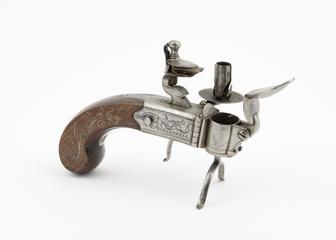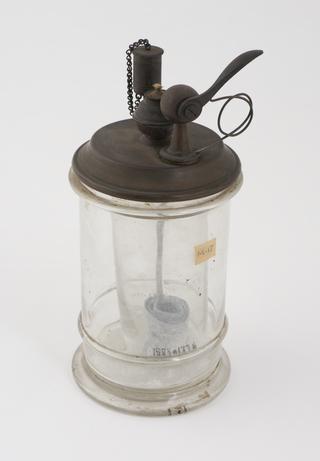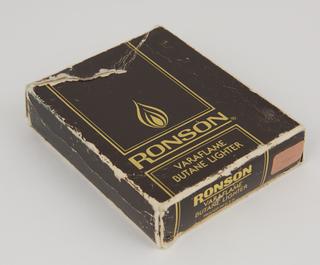
Wooden tinder box, Norway
- Made:
- Norway

Tinder box, wooden, with the exterior chip-carved and painted light red. It consists of two compartments and was designed to be hung on the wall of a hearth to light fires in the home, Norway
Humans have throughout history used different techniques and tools to create life-sustaining fires. One of the oldest and most widespread methods is by using tinder, flint, and steel. Sharp-edged flints are struck against a fire striker, which causes hot, oxidising metal particles to split off and ignite tinder. Tinder is a fine material with the ability to combust quickly and often consists of amadou made from fungus, plant fibres, or artificial materials like paper strips and petroleum.
A variety of different boxes, bags, and pouches was used to store the kits and to keep the tinder dry. While some were designed as pocket versions to start fires on the go, others, like this wooden box from Norway, were made for domestic use to light hearths, fireplaces, and candles in the home. This example is designed to be hung on the wall of a hearth and was a common feature of households until the mid-19th century. While most tinder boxes were made of wood or tin, wealthier homes tended to own boxes made of brass or silver.
This object is part of the Bryant and May fire-making collection, which used to be displayed in a private museum within the Bryant and May match-making factory’s offices. The collection comprises around 1200 objects, dating from the Stone Age to the early 20th century that illustrate the variety of tools and techniques humans across the world have used to create fires.
Details
- Category:
- Firemaking
- Object Number:
- 1937-682/618
- Materials:
- wood (unidentified)
- Measurements:
-
overall: 393.7 mm
- type:
- tinder-box
- credit:
- Wilkinson Sword Ltd.




